To reduce soil compaction on his farm, Co Tyrone dairy farmer Andrew Wright has focused on reducing the area in fields that is driven over by machinery.
Andrew milks 170 Holstein Friesian cows with his father William outside Omagh. He has been farming full-time since graduating from CAFRE and Queen’s University Belfast with an Agricultural Technology degree in 2012.
Andrew has an interest in software development and began fitting GPS technology in tractors on his farm four years ago. This technology accurately tracks tractor movements during slurry spreading, fertiliser sowing, spraying and mowing.
He found that 86% of four-cut silage ground was being driven over each year and he estimates that the actual figure would be at least 95% if lifting and drawing grass was included in the calculations.
Previous tracks in the field are plotted on GPS guidance software and are now followed as much as possible when driving. In 2018, field traffic for slurry, fertiliser, spraying and mowing had reduced to 61%.
Driving over the same tracks leads to soil compaction in these areas, but Andrew points out that 80% of the compaction occurs during the first pass so it is worth driving over the same areas if it means no traffic elsewhere.
The Wrights do their own machinery work and do not use contractors. Andrew plans to extend GPS trackers to all tractors and install easy-to-use touchscreen technology next year so that all field traffic is recorded. He maintains that total field traffic of 65-70% is a realistic target for his farm.
Yield penalties
Andrew said that research on soil compaction indicates that it can reduce grass yields anywhere between 2 and 20%. In general, the higher yield penalty comes when compaction is near the surface.
Andrew points out that the main cause of soil compaction in NI is spreading slurry in the springtime. However, he acknowledges that early season growth is important, so it is not economical to stop spreading slurry in February to avoid compaction.
Instead, Andrew has invested in a Moscha swivel spout to increase his spreading distance to 16m. This matches slurry spreading to fertiliser sowing, meaning the same tracks can be used for both.
Beforehand, he had a 10m slurry spreading distance and with a combined tyre width of 3m, this equated to 30% field traffic for one pass. This has been reduced to 19% with the wider spreading distance.
Silage ground is three miles from the main farmyard and a 2,750-gallon tanker is used to ferry slurry to a 1,600-gallon tanker that is used for spreading. Andrew said that this limits axle load on the slurry tanker to eight tonnes.
“Before this we were using a 2,400-gallon tanker for the road and the field, which was 12t on the rear axle, so it was doing a lot of sub-soil damage,” he said.
The new slurry spreading setup on the Wright farm requires an extra driver, tractor and tanker. Andrew has calculated that it cost £6 to spread 1,000 gallons with the single 2,400-gallon tanker, whereas it costs £9 with the new two-tanker system (including labour costs).
“A conservative estimate would be that I am getting a 5% increase in grass yields with reduced soil compaction. That is worth around £4,000 a year (based on grass worth £25/t fresh weight) which is equivalent to the extra cost,” he said.
Ammonia
Compared to a conventional splash plate, slurry is spread as larger droplets with a Moscha spout. There has been some research which has indicated that Moscha swivel spouts produce the same ammonia emissions as dribble bars.
Andrew said that if this is backed up by more research then the Moscha system could potentially provide a workable alternative to the splash plate. However, if the Moscha spout is banned in the future, then he will have to invest in a whole new slurry outfit.
Andrew estimates that when the extra weight of a trailing shoe is considered along with the re-distribution of weight between the tractor and slurry tanker, retro-fitting a trailing shoe to the existing 1,600-gallon tanker would increase the axle load to almost 12t.
He said that policy makers need to consider any impact on soil structure and reduced grass yields when considering options for reducing ammonia emissions from slurry spreading.
The use of implements such as aerators and subsoilers to alleviate soil compaction on most livestock farms in NI is questioned by Omagh dairy farmer Andrew Wright.
He points out that livestock can only cause compaction in the topsoil as their weight cannot damage the subsoil (more than 30cm below the surface). The main cause of sub soil compaction is machinery.
Andrew maintains that soils can alleviate compaction issues naturally, especially in dry weather.
Research has shown that topsoils correct compaction issues naturally within five years. Issues with subsoil compaction can take seven to 10 years to fix, but some compaction in the lower subsoil (more than 50cm below the surface) can be permanent.
On farms where subsoilers have appeared to correct a compaction issue caused by livestock, Andrew suggests that compaction in the topsoil was broken up as the subsoiler tore through the ground.
He points out that compaction in topsoils can also be fixed by ploughing and if a full conventional reseed is used to address the issue, a new grass sward is an extra bonus. Likewise, soil compaction at shallow depths where aerators or spikers operate can also be fixed by ploughing.
Where there is compaction in the subsoil, Andrew said that subsoilers do not operate at low enough depths to correct damage in the lower subsoil. He added that most subsoil compaction will fix itself naturally over time anyway.
Andrew said that there should be more focus on avoiding the cause of soil compaction by reducing axle loads and field traffic, instead of using mechanical loosening.
The Wrights are aiming to reduce feed costs by more targeted concentrate feeding and making better-quality silage.
Last year, the 170-cow herd averaged 8,000 litres/cow from 2.8t of concentrates. Cows are usually at grass from mid-March to mid-November and are fed blocks of silage during the winter.
Concentrates are fed on a flat-rate basis through the parlour and last year average feed rate stood at 0.35kg/l. Andrew said that the aim is to lower this to 0.30kg/l, meaning 2.4t of concentrate/cow would be fed at the current milk yield.
A new 20-a-side double-up milking parlour is being built under the Tier 2 grant scheme. The parlour will include an auto ID system which will allow concentrates to be fed on a feed-to-yield basis.
Production costs
Cost of production last year stood at 18.9p/l. Total fixed costs are low at present, but are expected to increase by around £100/cow with the new parlour. However, Andrew said that this should be offset by savings through lower feed costs.
Improving silage quality is the other element of reducing concentrate levels. Average D-value of silage samples has increased over the past four years and is over 70 this year.
Reducing intervals between cuts to allow four or five cuts each year, mowing grass earlier in the day and favourable weather conditions have helped improve silage quality, Andrew said.
“The land area around the yard is enough to graze 190 cows. We will increase numbers towards 190, but we don’t plan on going over it. Grazing will remain a key part of the system,” he said.

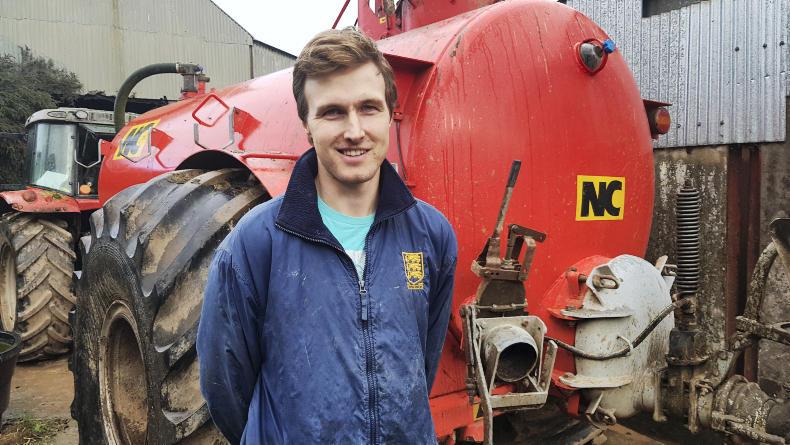




 This is a subscriber-only article
This is a subscriber-only article





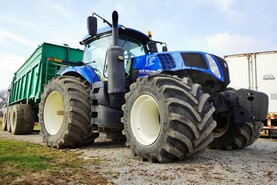
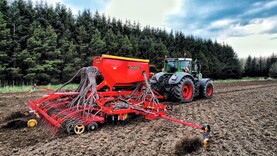
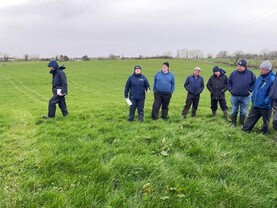
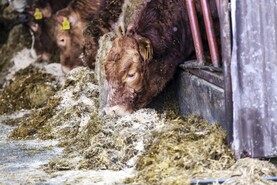

SHARING OPTIONS: